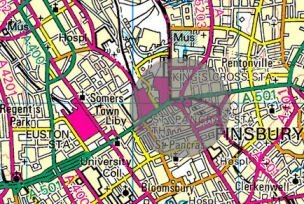16/08/2005 - Exploiting our children's safety for a quick buck
Not that long ago there was a device called "MyMo", which was a GSM
mobile phone target specifically at 4 - 8 year olds as an emergency device by a
company called Communic8. However, due to statements such as those made by Sir
William Stewart calling for all under 8 year olds to completely avoid usage of
a mobile phone under any circumstances, Communic8 quite rightly pulled the phone
from the market. Unfortunately, it is now back under a different guise.
Now simply called "Owl", the phone is being marketed by a new company called
Eazytrack, and the arguments being used to support it are a complete nonsense.
The advertised purpose of the phone is for little Johnny to be able to broadcast
his location to his parents when he gets lost. So far so good, though one
wonders how a 4 - 8 year old could so easily be allowed to get lost in a town
or city that the device would be necessary. However, according to Eazytrack
themselves, the device is only accurate to approximately 500 metres in built
up urban areas (where there are plenty of phone masts for triangulation), which
is next to useless. A 500 metre radius of accuracy gives a search area of about
785000 square meters to search, which in a crowded city centre would be just
about impossible (needle in a haystack comes to mind). Of course, in rural areas
the search accuracy could be considerably worse. This means that the primary
selling point of the phone is next to pointless, as the accuracy of the location
finder is so poor that it will almost never be able to be practically used. It
is likely that the main use of the phone will be the parent chatting to the
child, which is precisely what the current government recommendations suggest
should not be happening. See below for a pictorial representation of this
"best possible" range as seen near King's Cross train station in London:
  - BBC News article with
Sir William Stewart's Comments * - BBC News article with
Sir William Stewart's Comments *
* It is interesting to note that the Eazytrack site's link to a BBC news
story on their "Safety Issues and Concerns" page contains a link straight to the
page (released on the same day) condemning children's usage of phones in any
form.
The phone can only dial 5 preprogrammed numbers (programmed by the parents),
and to those numbers it is effectively a standard pay as you go phone. The
problem is that being fundamentally a standard GSM phone, it is in constant
contact with phone masts, so the lack of phone numbers does not equate to a lack
of exposure and it is extremely important that the phone is kept as
far away from important organs as possible. Unfortunately Eazytrack provide a
free "headset necklace" to carry the phone around the child's neck, which will
of course leave it dangling next to their heart and other major organs.
Sir William Stewart said very specifically that under 8's should not use a
phone at all, and Communic8 pulled the phone off the market precisely because
the current research had indicated the chance of health risk was simply too
great. Considering this, to market a phone solely at this age group
is morally wrong, and the arguments to support it must surely be outweighed by
the potential increased risk to the child's health.
| 


